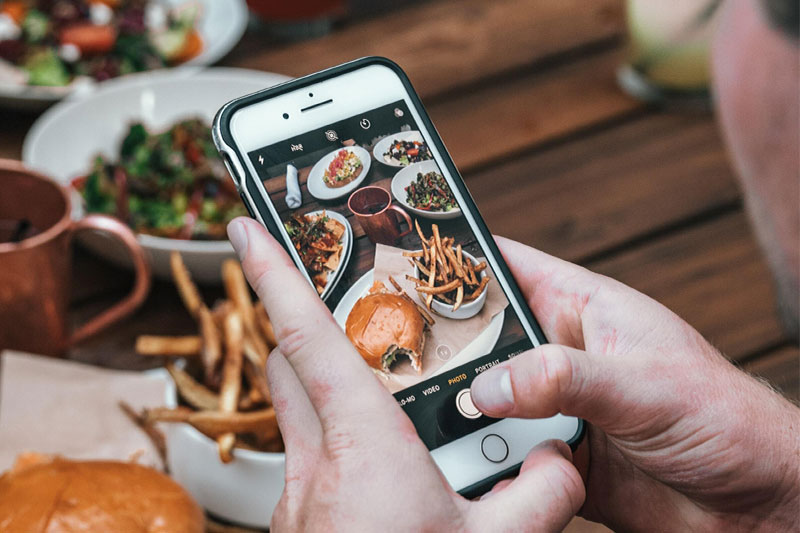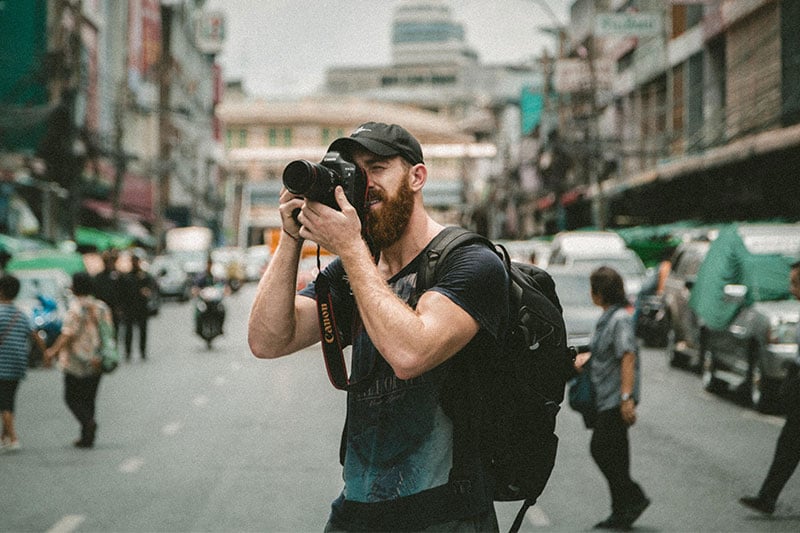Instagram is a powerful marketing tool if you’re targeting millennials and Gen Zs. These 8 Instagram analytics metrics will help you bring your A-game to the table.
From higher engagement rates to driving conversions, Instagram marketing can be crucial to generating more revenue for the business. Most importantly, Instagram can help create a strong brand identity that increases awareness of the business and promotes a cohesive brand image to the public.
Using this platform can be really successful for the business, but in order to do so, you should be closely monitoring its performance. Here are the 8 most important Instagram metrics you can use as KPIs to track the success of your marketing strategy.

#1 Engagement Rate
Tracking and monitoring your posts’ engagement rate is crucial. Knowing how many people have engaged with your content is a key indicator of your followers’ perception of your business. You might have a lot of followers, but if they are not positively engaging with the business’s posts, it all amounts to nothing.
Each social media channel has unique metrics for engagement:
• Facebook – post reactions, shares, comments, impressions
• Instagram – likes, comments, links, clicks, saves, views
• Twitter – retweets, likes, replies
• LinkedIn – comments, shares, link clicks
Engagement rate is calculated via this formula:
Total Number of Likes and Comments / Total Number of Followers x 100 = Engagement Rate (%)
The most important thing to do on social media is to engage as many followers as possible. When followers interact with your content, it indicates that they are happy with your business and have the potential of becoming loyal customers, making them all the more likely to spread the word about your business. However, if the engagement rate of your business’ Instagram post is low, it would be wise to go back to the drawing board and redevelop a new and improved content plan.
For example, Nike is one of the most followed brands on Instagram, with over 113 million followers on Instagram, and has one of the best engagement rates around. This is, in part, due to their superior content strategy, which prioritises quality over quantity. The brand promotes empowering, original content that truly resonates with the target audience. On top of that, their customer support is legendary – they even have a Twitter account totally dedicated to answering customer queries. Companies today have to build meaningful relationships with their customers if they are to stand out amongst all the noise.
In order to increase your engagement rate, you need to be engaging. It’s as simple as that. So keep an eye on your engagement metrics to determine which elements in your content strategy are working for your target audience, and which are falling flat. From there, you can continue to optimise your content, increasing both your engagement rates and the likelihood of conversion.
#2 Instagram Stories Metrics
With over 500 million daily users, Instagram Stories can certainly be an effective way of generating new leads or reaching potential customers. With just about every brand now utilising IG Stories in some form, it’s important not to get left behind.
The most important Instagram Story metrics to look out for include replies, completion, watch-through rates, and drop off rates. You can do this via Instagram’s Insights tool. One thing to note, however, is that in order to access insights for your stories, you need to have an Instagram business account.
One way to gauge how customers are engaging with your Stories is by monitoring your tap backs and forward taps. For example, tap backs might indicate that your content was so interesting that the viewer wanted to go back for a second look. But, it also might indicate that you’re trying to pack too much content into a single frame, resulting in the viewer running out of the allotted time to consume it. Tap forwards, on the other hand, might suggest that your audience chose to skip that particular content for some reason.
A popular method of calculating your engagement rate is to divide your ‘reach’ by the number of followers to see what percentage of them are viewing your stories.
Assessing the effectiveness of your Instagram Stories can help you improve your content to attract uses who want to make a purchase. After all, a quarter of millennials and Gen Zs use Stories to find products they want to buy.

#3 Ad Click-Through Rates (CTR)
The main goal of most social media ad campaigns is to get people on your site and one of the best ways to do this is through ads. If you are running sponsored ads on Instagram, you should be monitoring their click-through rates (CTR) as one of the biggest KPIs.
Ad click-through rate are calculated via this formula:
Total number of impressions / Total number of clicks x 100 = Ad Click-Through Rates (%)
Additionally, if you’re running ads, you should also be keeping an eye on cost per thousand impressions (CPM) and cost per click (CPC), as these are key indicators of the effectiveness of your ads.
Average click-through rates on Instagram are around 0.52%, according to Adstage. If your click-through rate is high, then you’re on the right track! If it’s low, then it might suggest that either your content isn’t resonating with your audience or your call-to-action needs to be changed.
You can also experiment with split testing, also known as A/B testing, which will help you refine your caption, image and target audience to optimise results.
#4 Location Data
Location Data is a unique Instagram metric that allows businesses to pinpoint the geographical area where their followers are based. It can help you earmark areas where the business should have a more active presence, helping businesses looking to expand to other countries, cities, and districts.
You can also target the business’s Instagram posts to reach people living in certain areas. Alternatively, you can use the location data metric to reshape your entire digital marketing strategy. For example, business owners can start targeting certain areas within their local SEO efforts.
You can also use the location data to carefully structure ads posted by the business on other social media channels like Facebook. Therefore, Instagram’s Location Data extends beyond Instagram-related marketing concerns, encompassing the optimisation of the entire digital outreach campaign.
#5 Tracking IG Saves
IG Saves were introduced as a way to gain easy accessibility to interesting posts you want to bookmark for later, making it a great tool for assessing the quality of content created on your business’ page.
Unlike likes and comments which are exceptionally common on the platform, Instagram Saves are rarer. In order for someone to save your content for later viewing, they must really value it, making it a great indicator of what your target audience really wants to see on your feed. If the IG saves are low, however, that might indicate your content is less valuable to users.
You can improve the IG Saves metric by creating content with longer captions that provide useful and handy tips that users might like to keep nearby. That includes how-to content that users might need to use more frequently. Sony has successfully done this by including helpful tips on how to set up and optimise its cameras better at the bottom of a post.
There is a new engagement rate that has been introduced that includes IG saves in the equation. It is called a ‘true engagement rate’ and is calculated via the following formula:
(Saves + Comments + Shares) / Impressions x 100 = True Engagement Rate (%)
You can monitor the regular engagement rate in conjunction with the true engagement rate to gain a clearer perspective on the performance of your overall Instagram marketing campaign.

#6 Audience Growth Rate
Follower growth is essential to monitor as it depicts whether the business is stationary or moving forward. You should regularly monitor the rate at which your follower count is growing and identify whether its growth has consistent momentum or not.
If not, that means you should do something about the content the business posts on Instagram. Perhaps, improving the quality of your graphics or reshaping the content creation plan entirely will do the trick. You should also research your competitors’ social media strategy to understand the needs and wants of your target audience and shape your content strategy accordingly.
Audience growth rate can be calculated via the following formula:
New Followers Gained This Month / Followers At Beginning of Month x 100 = Audience Growth Rate
Monitoring your audience growth rate over time will allow you to glean a more holistic understanding of the effectiveness of your social media strategy. You might notice some rapid growth when the business has special outreach campaigns like social media challenges and sponsored ads. In the long-run, your growth should be gradually increasing and not stagnant.
#7 Hashtag Metrics
Analysing how effective your hashtags are will help you choose the best ones that will help you reach the business’s goals. Therefore, before using a hashtag, ensure that you know how popular it is and how likely it is to drive people to your content. You can do that by monitoring hashtag activity on tools such as Owlmetrics, an analytics platform that helps users track important data points like engagement, follower growth, hashtag activity, unfollows, and more.
The most important thing to do when dealing with hashtags is ensuring that they are well researched and relevant to your content and the business at large. Using irrelevant or generic hashtags will not garner the results you want. Instead, make sure that your hashtags are short, relevant, and easy to spell. Make sure you keep monitoring the effectiveness of each hashtag to see which ones should keep being used.
Some businesses create their own hashtags. For example, Gucci’s #23hourace hashtag promotes their sneakers by encouraging users to post videos of them in action, creating user-generated content that can be reposted on the company’s official social media channels. If you choose this option, it will be beneficial to monitor how it is performing or if it needs to be boosted or reconsidered altogether.
For example, if a custom hashtag does not gain momentum, you might like to pair it with another effective one that has been used by yourself or other brands, perhaps a trending hashtag. Alternatively, you might need to cancel it altogether and stick to hashtags that have been proven to be more effective.
#8 Bio Link Click-Through Rate (CTR)
Apart from sponsored ads, there’s no other place on Instagram to include a working link to an external site except for the bio link. If you would like to ensure that your Instagram followers head over to your business’s website, it is essential that you continually direct them to your URL in the bio.
Perhaps when promoting a new product range, you can include a call-to-action in your caption, telling the audience to go check it out ‘via link in bio’. It is important to monitor the clicks you get from the Instagram bio as it indicates just how effective this social platform is for your business objectives. If Instagram is driving a lot of traffic to your business’s website, that means your marketing strategy is on the right track.
If there is very little traffic being driven to the landing page, you should start promoting the link in the bio differently. Remember, the intention behind every social media strategy is to get users to engage with your content on a variety of platforms, including the company’s website – not just Instagram.
Fundamentally, Instagram analytics is important to monitor because there are metrics that can help you reshape your entire digital marketing strategy. Monitoring the performance of Instagram by different yardsticks can help the business reach customers much more effectively and meaningfully. So, be sure not to underestimate the many benefits of leveraging Instagram analytical data to increase your audience engagement and drive conversions!
Related Articles
5 Ways to Improve Your Company’s Brand Image
Rebranding: 5 Key Steps to Rebrand Successfully in 2020
Content Localisation: 8 Success Tips to Help You Expand Globally





